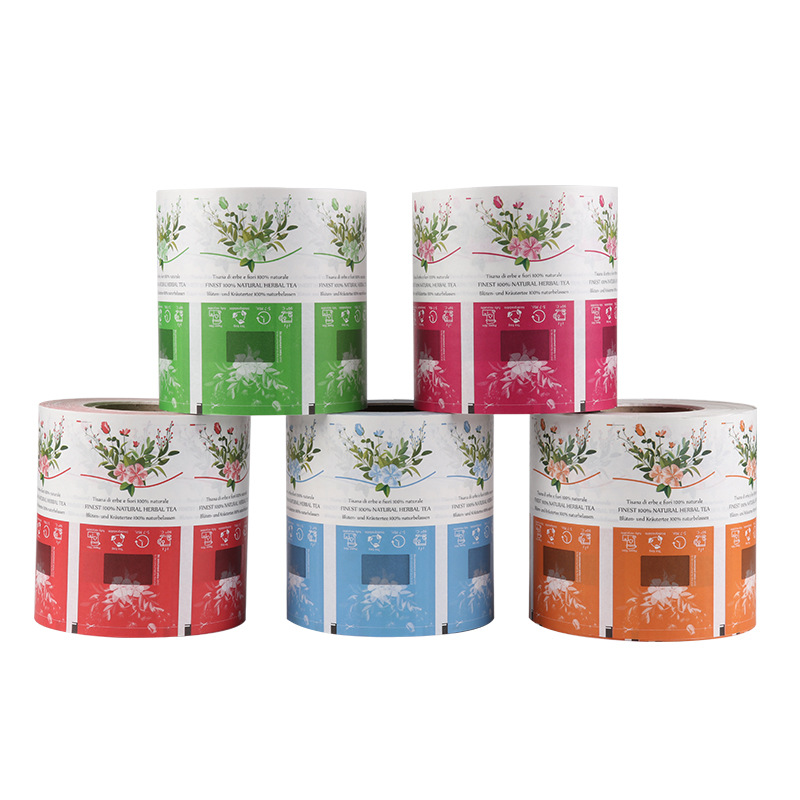In order to extend the shelf life of substances such as food and drugs, many packaging materials for food and drugs nowadays use multi-layer packaging composite films. Currently, there are two, three, five, seven, nine, and even eleven layers of composite packaging materials. Multi layer packaging film is a thin film formed by extruding multiple plastic raw materials into multiple channels simultaneously from a single mold opening, which can leverage the advantages of different materials
Multi layer packaging film roll are mainly composed of polyolefin combinations. Currently, the commonly used structures include: polyethylene/polyethylene, polyethylene ethylene vinyl acetate copolymer/polypropylene, LDPE/adhesive layer/EVOH/adhesive layer/LDPE, LDPE/adhesive layer/EVH/EVOH/EVOH/adhesive layer/LDPE. The thickness of each layer can be adjusted through extrusion technology. By adjusting the thickness of the barrier layer and using a variety of barrier materials, flexible films with different barrier properties can be designed. The heat sealing layer materials can also be flexibly replaced and adjusted to meet the needs of different packaging. This multi-layer and multifunctional packaging composite is the mainstream direction for the development of packaging film materials in the future.
Multi layer packaging composite film structure
Multi layer packaging composite film, regardless of the number of layers, is generally divided into base layer, functional layer, and adhesive layer based on the function of each layer of the film.
Basic level
Generally, the inner and outer layers of composite films should have good physical and mechanical properties, forming processing performance, and heat sealing layer. It also needs to have good heat sealing performance and hot welding performance, which are relatively low-cost, have good support and retention effects on the functional layer, and have the highest proportion in the composite film, determining the overall rigidity of the composite film. The base materials are mainly PE, PP, EVA, PET, and PS.
Functional layer
The functional layer of food packaging film is mostly a barrier layer, usually in the middle of a multi-layer composite film, mainly using barrier resins such as EVOH, PVDC, PVA, PA, PET, etc. Among them, the most commonly used high barrier materials are EVOH and PVDC, and the common PA and PET have similar barrier properties, belonging to medium barrier materials.
EVOH (ethylene vinyl alcohol copolymer)
Ethylene vinyl alcohol copolymer is a polymer material that combines the processability of ethylene polymers and the gas barrier properties of ethylene alcohol polymers. It is highly transparent and has good gloss. EVOH has excellent barrier properties for gases and oils, with excellent mechanical strength, elasticity, wear resistance, cold resistance, and surface strength, and excellent processing performance. The barrier performance of EVOH depends on the ethylene content. When the ethylene content increases, the gas barrier performance decreases, but the moisture resistance performance increases, and it is easy to process.
Products packaged with EVOH materials include seasonings, dairy products, meat products, cheese products, etc.
PVDC (polyvinylidene chloride)
Polyvinylidene chloride (PVDC) is a polymer of vinylidene chloride (1,1-dichloroethylene). The decomposition temperature of homopolymer PVDC is lower than its melting point, making it difficult to melt. Therefore, as a packaging material, PVDC is a copolymer of vinylidene chloride and vinyl chloride, which has good airtightness, corrosion resistance, good printing and heat sealing properties.
In the early days, it was mainly used for military packaging. In the 1950s, it began to be used as a food preservation film, especially with the rapid development of modern packaging technology and modern people’s pace of life, the rapid freezing and preservation packaging, the revolution of microwave cookware, and the extension of food and drug shelf life have made the application of PVDC more popular. PVDC can be made into ultra-thin films, reducing the amount of raw materials and packaging costs. It is still popular today
Adhesive layer
Due to the poor affinity between some base resins and functional layer resins, it is necessary to place some adhesive layers between these two layers to act as glue and form an integrated composite film. The adhesive layer uses adhesive resin, commonly used include polyolefin grafted with maleic anhydride and ethylene vinyl acetate copolymer (EVA).
Maleic anhydride grafted polyolefins
Maleic anhydride grafted polyolefin is produced by grafting maleic anhydride onto polyethylene through reactive extrusion, introducing polar side groups on non-polar chains. It is an adhesive between polar and non-polar materials and is commonly used in composite films of polyolefins such as polypropylene and nylon.
EVA (ethylene vinyl acetate copolymer)
EVA introduces vinyl acetate monomer into the molecular chain, reducing the crystallinity of polyethylene and improving the solubility and thermal sealing performance of fillers. The different contents of ethylene and vinyl acetate in materials result in different applications:
① The main products of EVA with ethylene acetate content below 5% are adhesives, films, wires and cables, etc;
② The main products of EVA with a vinyl acetate content of 5%~10% are elastic films, etc;
③ The main products of EVA with a vinyl acetate content of 20%~28% are hot melt adhesives and coating products;
④ The main products of EVA with a vinyl acetate content of 5%~45% are films (including agricultural films) and sheets, injection molded products, foam products, etc.
Post time: Jun-12-2024






